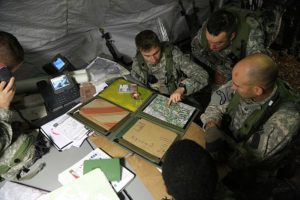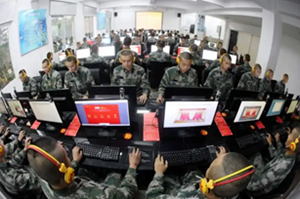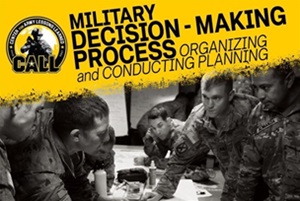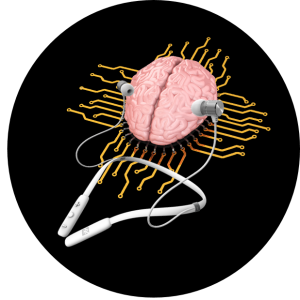“Agentic warfare is here, whether we welcome it or not. The era of military planners manually gathering limited data and compiling static crisis response options on briefing slides is over. In the next few years, the defense community will see the emergence of AI agents representing military planners, logisticians, intelligence officers, and operators that harness centuries of stored experience in real-time digital collaboration, generating uniquely effective crisis solutions for human decision-makers in seconds…. First-mover advantage in leveraging this capability will not merely ensure battlefield dominance — it will be overwhelmingly decisive at every level of warfare. It could herald the dawn of a new defense paradigm, supplanting the outdated defense-industrial complex with an agile, AI-driven agentic base. The stakes could not be higher….” — Agentic Warfare Is Here. Will America Be the First Mover? War on the Rocks, 23 April 2025.
[Editor’s Note: The article cited above predicts that agentic capabilities — i.e., those Artificial Intelligence (AI) systems that can operate independently, making decisions and executing actions without constant human supervision — when “employed by [our] adversaries… will dramatically outperform traditional Western paradigms of 24- to 72-hour decision cycles and wartime initiative.” While not specifically using the term “agentic warfare,” today’s The Convergence podcast features Jonathan Pan describing how this capability could accelerate the Army’s Military Decision Making Process (MDMP), enabling us to achieve decision advantage and fight at machine speed — Enjoy!]
[If the podcast dashboard is not rendering correctly for you, please click here to listen to the podcast.]
 Jonathan Pan is the co-founder and CEO of Exia Labs, a defense technology startup. Exia’s products include Blue, an Army brigade decision support tool, and Recon, an Intelligence Preparation of the Operational Environment Artificial Intelligence (AI) agent. Prior to founding Exia, Mr. Pan was Senior Director of Product Management at the innovation unit of Walmart, where he led AI projects focused on shopping search and immersive shopping. He also led product and content teams at Amazon, Meta, and Riot Games, and served as an advisor for the SXSW Conference Internet and Gaming tracks between 2017 – 2022.
Jonathan Pan is the co-founder and CEO of Exia Labs, a defense technology startup. Exia’s products include Blue, an Army brigade decision support tool, and Recon, an Intelligence Preparation of the Operational Environment Artificial Intelligence (AI) agent. Prior to founding Exia, Mr. Pan was Senior Director of Product Management at the innovation unit of Walmart, where he led AI projects focused on shopping search and immersive shopping. He also led product and content teams at Amazon, Meta, and Riot Games, and served as an advisor for the SXSW Conference Internet and Gaming tracks between 2017 – 2022.
 Prior to joining industry, Mr. Pan served in the U.S. Army, beginning his career as a platoon leader in the 2nd Infantry Division in the Republic of Korea. He deployed to Afghanistan as part of 5th Stryker Brigade Combat Team, 2nd Infantry Division. After leaving active duty, he briefly served in the New York Army National Guard’s 1st Battalion, 69th Infantry Regiment. His awards and decorations include the Bronze Star Medal, the Combat Infantryman Badge, the Expert Infantryman Badge, and the Parachutist Badge. He continues his service in the Army as a civilian Army Reserve Ambassador for the state of Washington, where he focuses on increasing awareness of the United States Army Reserve among local communities, civic leaders, and state legislators, with the goal of enhancing support for the Army Reserve, its personnel, and their families.
Prior to joining industry, Mr. Pan served in the U.S. Army, beginning his career as a platoon leader in the 2nd Infantry Division in the Republic of Korea. He deployed to Afghanistan as part of 5th Stryker Brigade Combat Team, 2nd Infantry Division. After leaving active duty, he briefly served in the New York Army National Guard’s 1st Battalion, 69th Infantry Regiment. His awards and decorations include the Bronze Star Medal, the Combat Infantryman Badge, the Expert Infantryman Badge, and the Parachutist Badge. He continues his service in the Army as a civilian Army Reserve Ambassador for the state of Washington, where he focuses on increasing awareness of the United States Army Reserve among local communities, civic leaders, and state legislators, with the goal of enhancing support for the Army Reserve, its personnel, and their families.
Mr. Pan is also a Visiting Fellow at the Hoover Institution, Stanford University, where he conducts research on the intersection of artificial intelligence and wargames. He has a Master of Business Administration from New York University and received a Bachelor of Arts in Economics from Baruch College, City University of New York.
In our latest episode of The Convergence podcast, Army Mad Scientist sat down with Mr. Pan to discuss the impact of AI on achieving decision advantage and explore how our adversaries are innovating in this space. The following bullet points highlight key insights from our conversation.
-
-
- Decision advantage is the ability to make better and faster decisions than an opponent. At brigade and below echelons, where staffs are smaller with more junior Soldiers, the Military Decision Making Process (MDMP) is slow and will only become harder in the case of staff
 reductions. AI offers the opportunity for machine speed to assist humans with quickly executing processes that could be automated and fosters human creativity and judgement. Currently, these tools have not been focused on brigades and below as much as they have been geared toward the Army enterprise at higher echelons (e.g., division and above).
reductions. AI offers the opportunity for machine speed to assist humans with quickly executing processes that could be automated and fosters human creativity and judgement. Currently, these tools have not been focused on brigades and below as much as they have been geared toward the Army enterprise at higher echelons (e.g., division and above).
- Decision advantage is the ability to make better and faster decisions than an opponent. At brigade and below echelons, where staffs are smaller with more junior Soldiers, the Military Decision Making Process (MDMP) is slow and will only become harder in the case of staff
-
-
-
- China is well positioned to succeed in the AI field for two reasons: 1) their talent pool for AI research is deep, and 2) Chinese gaming
 culture is prolific and extensive. China – a country that has not had combat experience for decades – hosts a National Wargame E-Sports competition in which participants compete on how best to invade Taiwan. For the U.S., ensuring that wargames and simulations are engaging and fun will increase the likelihood that Soldiers will be interested in participating and learning from their repetitions for a specific proficiency.
culture is prolific and extensive. China – a country that has not had combat experience for decades – hosts a National Wargame E-Sports competition in which participants compete on how best to invade Taiwan. For the U.S., ensuring that wargames and simulations are engaging and fun will increase the likelihood that Soldiers will be interested in participating and learning from their repetitions for a specific proficiency.
- China is well positioned to succeed in the AI field for two reasons: 1) their talent pool for AI research is deep, and 2) Chinese gaming
-
-
-
 Currently, no AI system can replicate what is known as “the art of war.” Decision support products with human review and approval at each step maintains a human-in-the-loop for decision-making – building trust between humans and the AI tool.
Currently, no AI system can replicate what is known as “the art of war.” Decision support products with human review and approval at each step maintains a human-in-the-loop for decision-making – building trust between humans and the AI tool.
-
-
-
- In the future, we may not need humans to command groups of autonomous systems. AI and
 Machine Learning (ML) may be advanced enough to lead an autonomous squadron without human intervention. This may shift the way data is created – from humans generating data and machines learning to machines generating data themselves and learning from it.
Machine Learning (ML) may be advanced enough to lead an autonomous squadron without human intervention. This may shift the way data is created – from humans generating data and machines learning to machines generating data themselves and learning from it.
- In the future, we may not need humans to command groups of autonomous systems. AI and
-
-
-
- If the U.S. Army wants to pursue decision advantage, it must embrace the integration of AI and ML across the force. Current DoD command and control systems and processes have been optimized for low in-
 tensity conflict and do not accurately address decision advantage over a near peer competitor. AI, ML, and software could help improve and accelerate the Army’s MDMP to machine speed.
tensity conflict and do not accurately address decision advantage over a near peer competitor. AI, ML, and software could help improve and accelerate the Army’s MDMP to machine speed.
- If the U.S. Army wants to pursue decision advantage, it must embrace the integration of AI and ML across the force. Current DoD command and control systems and processes have been optimized for low in-
-

Stay tuned to the Mad Scientist Laboratory for our next insightful episode of The Convergence on 14 August 2025, when we sit down with Jason Feser, Data Generation and Production Branch Chief at the Army Geospatial Center, to discuss the importance of Geospatial Analysis, how emerging technologies are being integrated into this field, and how our adversaries are incorporating this capability into how they fight.
If you enjoyed this post, check out the TRADOC Pamphlet 525-92, The Operational Environment 2024-2034: Large-Scale Combat Operations
Explore the TRADOC G-2‘s Operational Environment Enterprise web page, brimming with authoritative information on the Operational Environment and how our adversaries fight, including:
Our China Landing Zone, full of information regarding our pacing challenge, including ATP 7-100.3, Chinese Tactics, How China Fights in Large-Scale Combat Operations, BiteSize China weekly topics, and the People’s Liberation Army Ground Forces Quick Reference Guide.
Our Russia Landing Zone, including the BiteSize Russia weekly topics. If you have a CAC, you’ll be especially interested in reviewing our weekly RUS-UKR Conflict Running Estimates and associated Narratives, capturing what we learned about the contemporary Russian way of war in Ukraine over the past two years and the ramifications for U.S. Army modernization across DOTMLPF-P.
Our Iran Landing Zone, including the Iran Quick Reference Guide and the Iran Passive Defense Manual (both require a CAC to access).
Our North Korea Landing Zone, including Resources for Studying North Korea, Instruments of Chinese Military Influence in North Korea, and Instruments of Russian Military Influence in North Korea.
Our Irregular Threats Landing Zone, including TC 7-100.3, Irregular Opposing Forces, and ATP 3-37.2, Antiterrorism (requires a CAC to access).
Our Running Estimates SharePoint site (also requires a CAC to access) — documenting what we’re learning about the evolving OE. Contains our monthly OE Running Estimates, associated Narratives, and the quarterly OE Assessment TRADOC Intelligence Posts (TIPs).
Then check out the following Mad Scientist Laboratory blog post related content addressing the transformative power of AI:
Winning the Future: The U.S. Military’s Need for Technological Dominance and Defined Strategic Vision, by proclaimed Mad Scientist Dr. James Giordano and Elise Annett
Hybrid Intelligence: Sustaining Adversary Overmatch and associated podcast, with proclaimed Mad Scientist Dr. Billy Barry and LTC Blair Wilcox
Beyond Venture Capital: How the Government is Investing in Innovation, and associated podcast, with Murali Kannan and Coley Lewis
Artificial Intelligence (AI) Trends
Takeaways Learned about the Future of the AI Battlefield and associated information paper
Artificial Intelligence: An Emerging Game-changer
Report from Game On! Wargaming & The Operational Environment Conference, 06-07 November 2024
“Best of” Calling All Wargamers Insights (Parts 1 and 2)
Battle Tested: Revolutionizing Wargaming with AI and associated podcast, with proclaimed Mad Scientist Dr. Billy Barry
Unlocking TRADOC’s Potential with GenAI: Opportunities and Challenges and Generative AI: The New Ammunition in the Data Arms Race and associated podcast, with Ben Van Roo
Artificial Intelligence: Shaping the Future of Biological-Chemical Warfare, by Jared Kite
Training Transformed: AI and the Future Soldier, by proclaimed Mad Scientist SGM Kyle J. Kramer
The AI Study Buddy at the Army War College (Part 1) and associated podcast, with LtCol Joe Buffamante, USMC
The AI Study Buddy at the Army War College (Part 2) and associated podcast, with Dr. Billy Barry, USAWC
Rise of Artificial Intelligence: Implications to the Fielded Force, by John W. Mabes III
Integrating Artificial Intelligence into Military Operations, by Dr. James Mancillas
“Own the Night” and the associated Modern War Institute podcast, with proclaimed Mad Scientist Bob Work
Bringing AI to the Joint Force and associated podcast, with Jacqueline Tame, Alka Patel, and Dr. Jane Pinelis
Thoughts on AI and Ethics… from the Chaplain Corps
Gen Z is Likely to Build Trusting Relationships with AI, by COL Derek Baird
Hey, ChatGPT, Help Me Win this Contract! and associated podcast, with LTC Robert Solano
Chatty Cathy, Open the Pod Bay Doors: An Interview with ChatGPT and associated podcast
The Guy Behind the Guy: AI as the Indispensable Marshal, by Brady Moore and Chris Sauceda
AI Enhancing EI in War, by MAJ Vincent Dueñas
The Human Targeting Solution: An AI Story, by CW3 Jesse R. Crifasi
An Appropriate Level of Trust…
Disclaimer: The views expressed in this blog post do not necessarily reflect those of the U.S. Department of Defense, Department of the Army, Army Futures Command (AFC), or Training and Doctrine Command (TRADOC).



